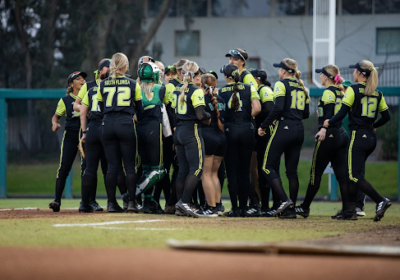AAC makes case for elite status as football conference

Justin Fuente led Memphis to a stunning upset of then-No. 16 Mississippi in October before being hired as the coach at Virginia Tech on Monday. ORACLE PHOTO/ROBERTO ROLDAN
Two Septembers ago, American Athletic Conference (AAC) commissioner Mike Aresco stood at the center of Lincoln Financial Field in Philadelphia to flip the coin for the conference’s inaugural game between Houston and Temple.
The conference, created after the Big East dissolved as a football conference in 2012 amid national realignment, had a fresh vision with eyes on tearing down the barrier between itself and Power Five programs.
Granted, the pipe dream of standing toe to toe with the likes of the Southeastern Conference and Big Ten is still out of reach. But the young league has quickly ascended the ranks, making it seem that dream may not be as far away as some might think.
With three programs claiming ranked positions among the elite in college football, the AAC has made its case to be considered along with the Power Five.
“We’re as good as any Power Five conference,” Aresco told the Orlando Sentinel in November. “There is no question that we can compete, and there is no question that we ought to be in that mix.”
Big talk is nice, but the quickest way to prove that you belong among the best is to defeat the best, and AAC teams have gotten there during its three seasons in existence.
This season alone, the conference notched wins over Penn State, Louisville and, of course, Mississippi’s devestating upset at the hands of Memphis in October.
The Rebels, then ranked No. 16, had beaten No. 2 Alabama just four weeks prior.
Arguably the conference’s crowning achievement came in its first year at the Fiesta Bowl, when Central Florida stunned No. 6 Baylor 52-42 in January 2014.
UCF quarterback Blake Bortles, who went on to become a first-round draft pick by the Jacksonville Jaguars later that year, threw four touchdowns to set the foundation for what was to come.
It was the attention-grabber the conference had been looking for and has continued to build off since.
After sending six teams to bowl games in 2014, the AAC added another two to that total this season.
The depth of the league may be its biggest selling point. With no teams earning a spot in the preseason polls, undefeated starts by Houston (10-0), Memphis (8-0) and Temple (7-0) gave the voters little choice. The Cougars received the highest ranking of any AAC team this season, rising to No. 13 before being upset by Connecticut last Saturday.
This depth made it hard to maintain those streaks, not to mention close losses to top-tier Power Five teams.
USF coach Willie Taggart has seen the conference’s progression, as well.
“Our first year, we lost a lot of games that we were supposed to win,” Taggart said. “Then the next year, we won those games. … This year, we’re winning games that we’re not supposed to and to me, that’s a sign of progression.”
To make the conference a bit more competitive, the AAC added a conference championship game to the fold with the addition of Navy before this season.
Houston will battle Temple on its home turf this Saturday for a rematch of the league’s inception three years ago.
At stake is a possible chance to show the college football world the AAC is a legitimate threat by making it into a New Year’s bowl game once again.
That’s what Aresco has his sights on.
“It would elevate us,” he told the Sentinel. “It would provide important exposure for the conference, and it would give us a chance for play another really good team and show them what we can do.”






